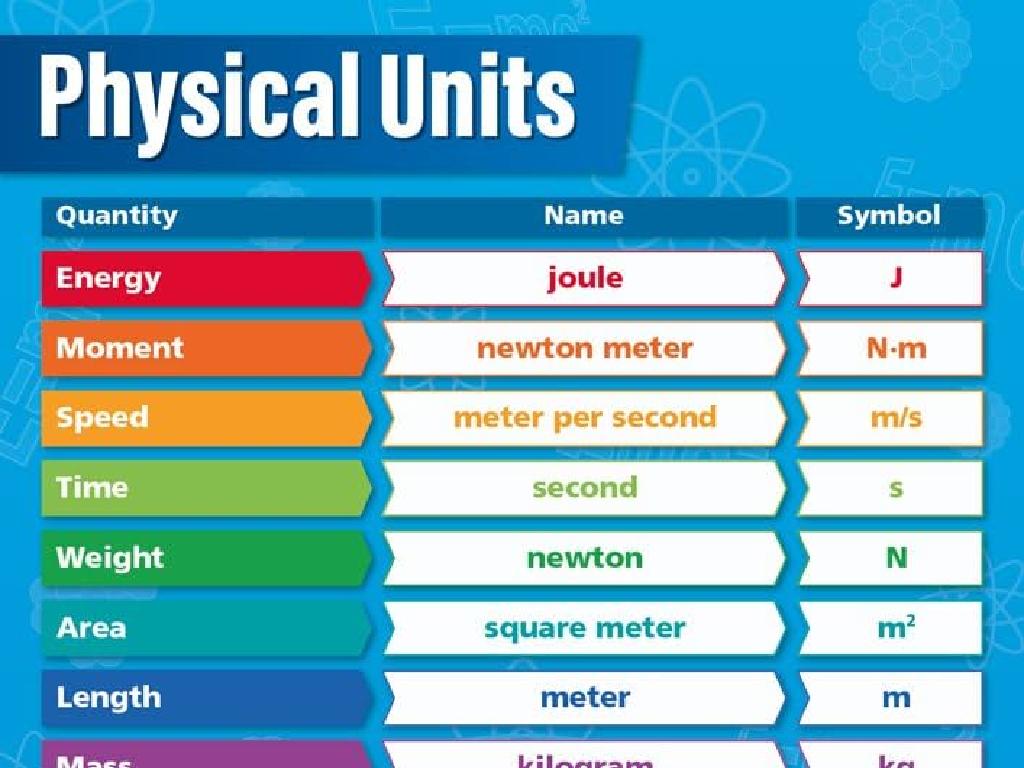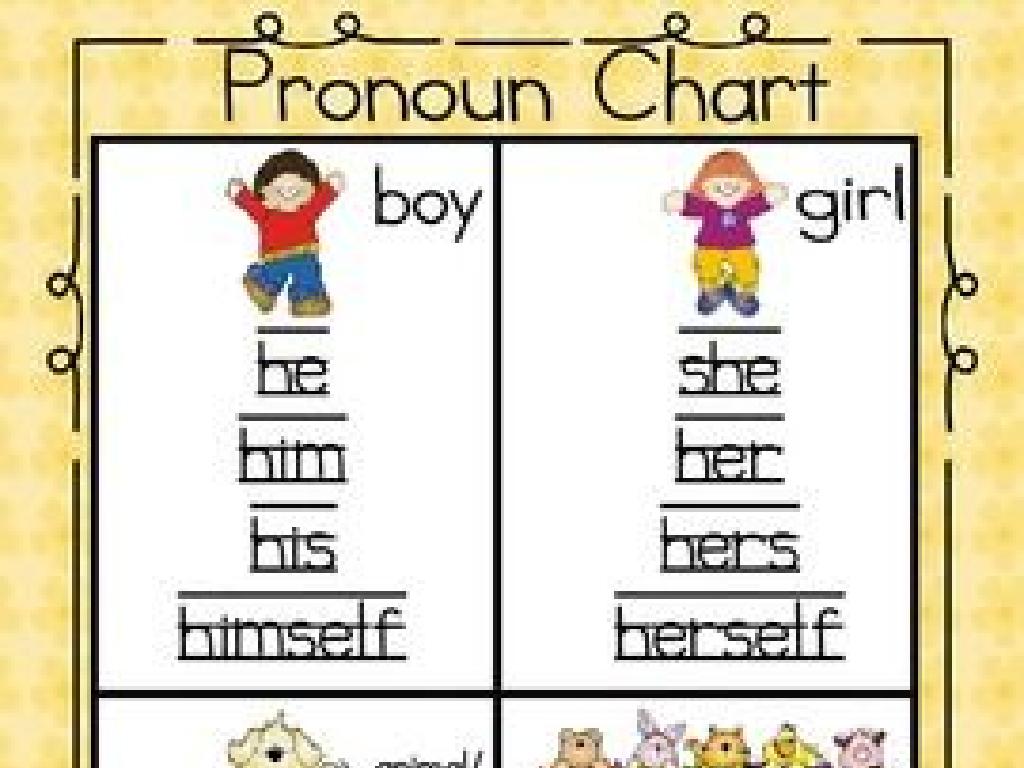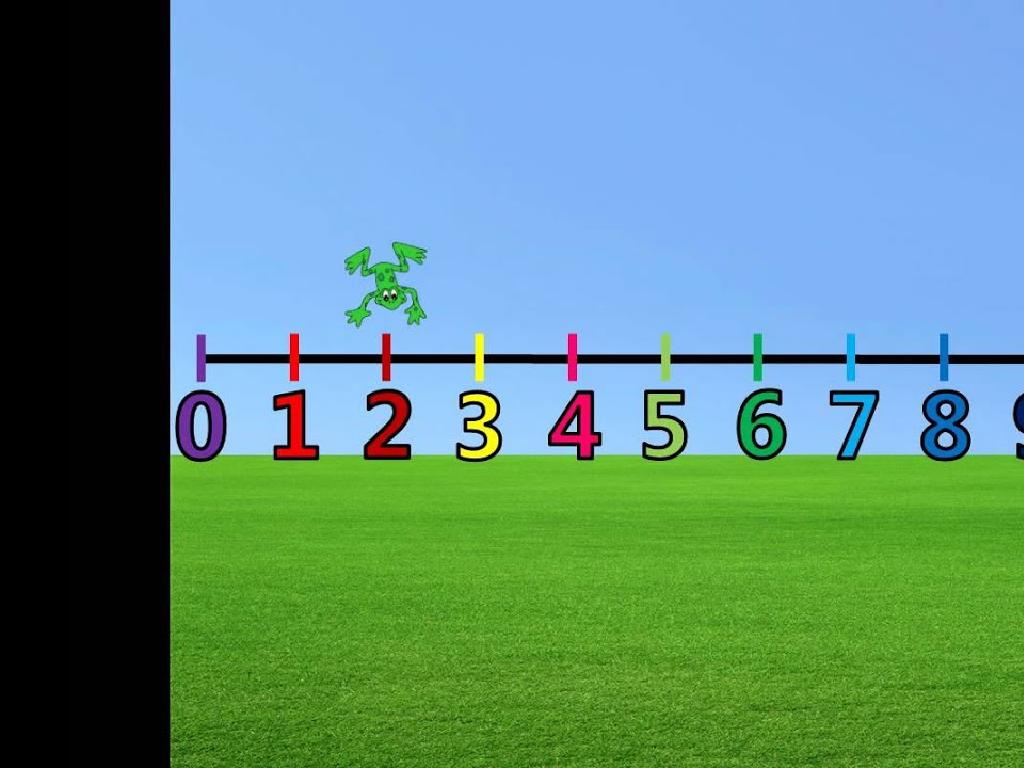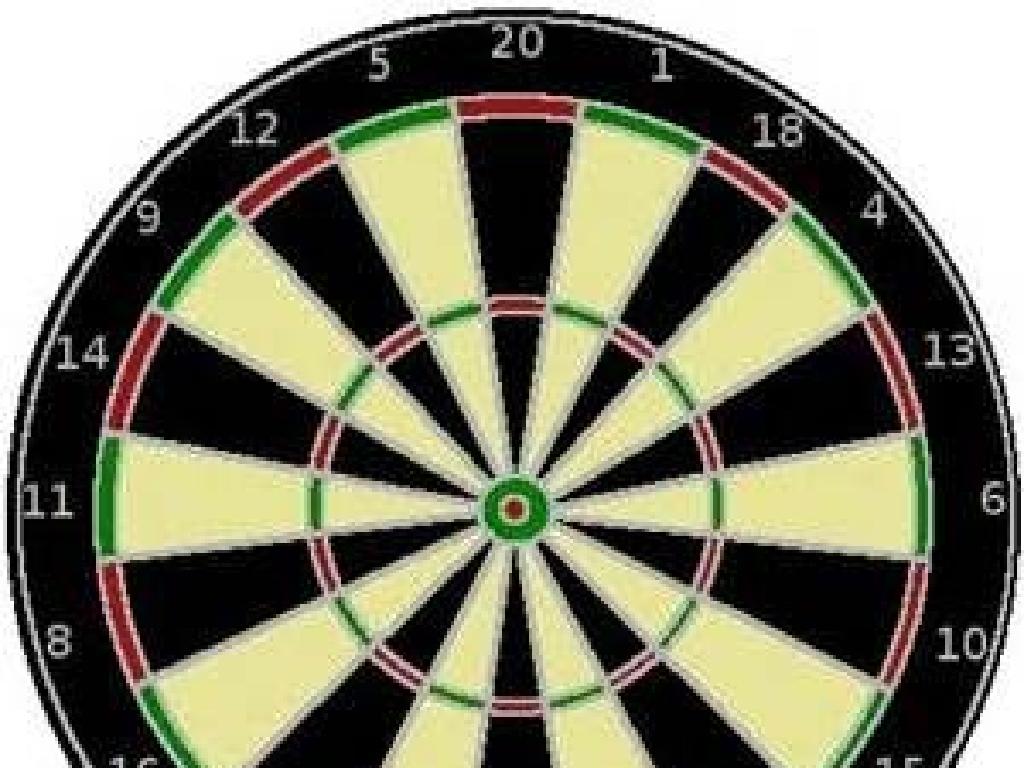Add Three Numbers Up To Three Digits Each
Subject: Math
Grade: Third grade
Topic: Addition: Three Digits
Please LOG IN to download the presentation. Access is available to registered users only.
View More Content
Welcome to Addition: Mastering Three-Number Addition
– Becoming addition experts today
– Adding three numbers, up to three digits
– For example, 123 + 456 + 789
– Why addition is a key math skill
– It helps solve problems quickly and accurately
– Addition’s role in daily life
– Use it for budgeting, cooking, or planning events
|
This slide introduces the concept of adding three numbers, each up to three digits, which is a fundamental skill in mathematics. The goal is to ensure that students understand the process and recognize the importance of addition in various aspects of daily life. Start by engaging the students with the excitement of becoming ‘addition experts.’ Then, demonstrate the addition of three multi-digit numbers with a step-by-step approach, ensuring to align the digits correctly and add one column at a time. Emphasize the practicality of addition in everyday scenarios such as managing money, preparing recipes, or organizing events, which requires combining different quantities. Encourage students to think of their own examples where they use addition to solve problems.
Understanding Addition: Combining Numbers
– Addition means finding the sum
– When we add, we combine numbers to see how much we have in total
– It’s a basic math operation
– Along with subtraction, multiplication, and division, it’s fundamental in math
– Used daily, like in counting money
– Think about when you count toys or buy things at the store
– Practice adding three-digit numbers
|
This slide introduces the concept of addition as a fundamental mathematical operation, emphasizing its practicality in everyday life. Start by explaining that addition is simply the process of combining two or more numbers to find their total, or sum. Highlight that addition is one of the four basic operations in mathematics, which also include subtraction, multiplication, and division. Provide relatable examples, such as counting money or objects, to illustrate how often we use addition in daily activities. Encourage students to think of their own examples. Conclude by challenging students to practice adding numbers, specifically with three digits, to build their skills in preparation for more complex math problems.
Adding Three Numbers – Step by Step
– Write numbers in a column
– Align digits by place value
– Add the ones place digits
– Start with the rightmost digits
– Carry over numbers above 9
– If sum is 10 or more, carry over
– Add the tens, then hundreds
– Continue with tens, then hundreds
|
This slide is designed to teach third-grade students the process of adding three numbers, each up to three digits. Begin by explaining the importance of aligning numbers by their place values (ones, tens, hundreds) to avoid confusion. Demonstrate adding the ones place first, as it’s the foundation for addition. Emphasize the concept of carrying over when the sum exceeds 9, which is a crucial step in multi-digit addition. After carrying over, guide students to add the tens place, followed by the hundreds, ensuring they understand each step. Provide examples and practice problems for students to apply these steps. Encourage them to check their work by adding the numbers in a different order to see if they get the same result.
Understanding Carrying Over in Addition
– Carrying over in the ones place
– When ones add to 10+, we carry to the tens
– Writing the ones and carrying the tens
– Put the ones digit down, carry the tens digit over
– Repeating for tens and hundreds
– Do the same when tens or hundreds add to 10+
|
This slide focuses on the concept of carrying over when adding three numbers with up to three digits each. Begin by explaining that when the sum of the numbers in the ones place is 10 or more, we need to carry over to the tens place. This means writing the ones digit of the sum below the line and carrying the tens digit over to the next column. Emphasize that this process is the same for the tens place and the hundreds place. Provide examples with sums that require carrying over in different places and allow students to practice with guided examples. Encourage students to ask questions if they’re unsure about when and how to carry over.
Let’s Practice Addition Together!
– Start with the example: 123 + 456 + 789
– Align the numbers vertically
– Make sure each digit is in the right column
– Add the ones, tens, and hundreds places
– If a column adds up to more than 9, carry over
– Write down the sum of each column
– Check your work to ensure accuracy
|
This slide is an interactive class activity designed to practice adding three numbers with up to three digits each. Begin by presenting the example problem on the board and ask the students to align the numbers correctly, ensuring each digit is in the right place value column. Then, guide them through adding each column starting from the ones place, moving to the tens, and then the hundreds, carrying over as necessary. After adding each column, write down the sum below the line. Encourage students to participate in solving the problem and to check their work. Possible activities for different students could include: having them come to the board to add one column each, working in small groups to solve additional problems, or creating their own three-number addition problems to solve.
Try It Yourself: Adding Three Numbers
– Practice adding three numbers
– Align numbers by place value
– Stack numbers vertically, matching ones to ones, tens to tens
– Remember to carry over
– If a column adds up to 10 or more, carry the extra to the next column
– Share your answers with the class
|
This slide is an interactive activity for students to practice the addition of three numbers, each up to three digits. Start by reminding them to carefully align the numbers by their place values to avoid confusion. Emphasize the importance of carrying over when the sum of a column is 10 or more, which is a crucial step in addition. After they have completed the exercise, encourage students to share their answers and methods with the class. This will help reinforce their understanding and allow for peer learning. As a teacher, be prepared to walk around the classroom to assist students who may struggle with alignment or carrying over. Have additional examples ready for students who finish early or require extra practice.
Checking Our Addition Work
– Importance of checking work
– Using a calculator for verification
– After adding, use a calculator to confirm the sum.
– Reversing the problem
– Subtract the sum from one of the addends; if correct, you’ll get the other addend.
– Review practice problems together
– Let’s solve and check the answers as a class activity.
|
This slide emphasizes the importance of verifying our answers after solving addition problems, especially when dealing with three-digit numbers. Students should understand that even when they are confident in their answer, checking their work is a good habit to prevent mistakes. Introduce the use of calculators as a tool for quick verification. Additionally, teach them the concept of ‘reversing the problem’ by using subtraction to check the correctness of their addition. During class, go through practice problems together, allowing students to apply these checking methods. This will not only reinforce their addition skills but also their understanding of the relationship between addition and subtraction.
Real-Life Addition: Everyday Math
– Addition in daily life
– Grocery shopping math
– Calculate total cost of items
– Party planning addition
– Add up guests and supplies needed
– Share your addition story
– Think of a time you used addition at home or with friends
|
This slide aims to show students how addition is not just a math concept they learn in school, but a useful tool they use in their daily lives. Start by discussing how addition is used in everyday situations, such as adding up the cost of groceries to stay within a budget or calculating the number of items needed for a party to ensure every guest is accounted for. Encourage students to think of their own experiences where they have used addition outside of school, like in playing games, sharing snacks, or even saving allowance. This will help them relate to the concept of addition as something practical and necessary. For the next class, ask students to bring a story of when they used addition, which will help reinforce their understanding and make math more engaging.
Class Activity: Addition Relay
– Teams solve addition problems
– Each member adds one number
– Pass your part to the next person
– First team with correct total wins!
|
This activity is designed to encourage teamwork and reinforce the concept of addition with three-digit numbers. Divide the class into small groups, each group will work as a team. Provide each team with a set of addition problems involving three numbers each up to three digits. One student will start by adding the first two numbers, then pass the problem to the next team member who adds the third number. The final student in the team will verify the total. The first team to arrive at the correct answer for all their problems wins. Possible variations of the activity could include a relay race where students run to a board to write their part of the solution, or a ‘telephone’ game where students whisper their part of the problem to the next person. Ensure that each student understands their role and the addition process before beginning the activity.
Conclusion & Homework: Mastering Addition
– Excellent work on three-number addition!
– Solve ten addition problems for homework.
– Use numbers up to three digits each.
– Double-check your answers.
– Use strategies like stacking and carrying over.
– Enjoy practicing addition!
|
Today’s lesson focused on adding three numbers, each up to three digits. Reinforce the importance of practice for mastering this skill. For homework, students are assigned ten problems to reinforce what they’ve learned. Remind them to use the strategies taught in class, such as stacking numbers vertically and carrying over when necessary. Encourage them to check their work to ensure accuracy. Emphasize that math can be enjoyable and to approach these problems with a positive mindset. In the next class, we’ll review the homework, discuss any challenges faced, and celebrate their efforts and successes.






